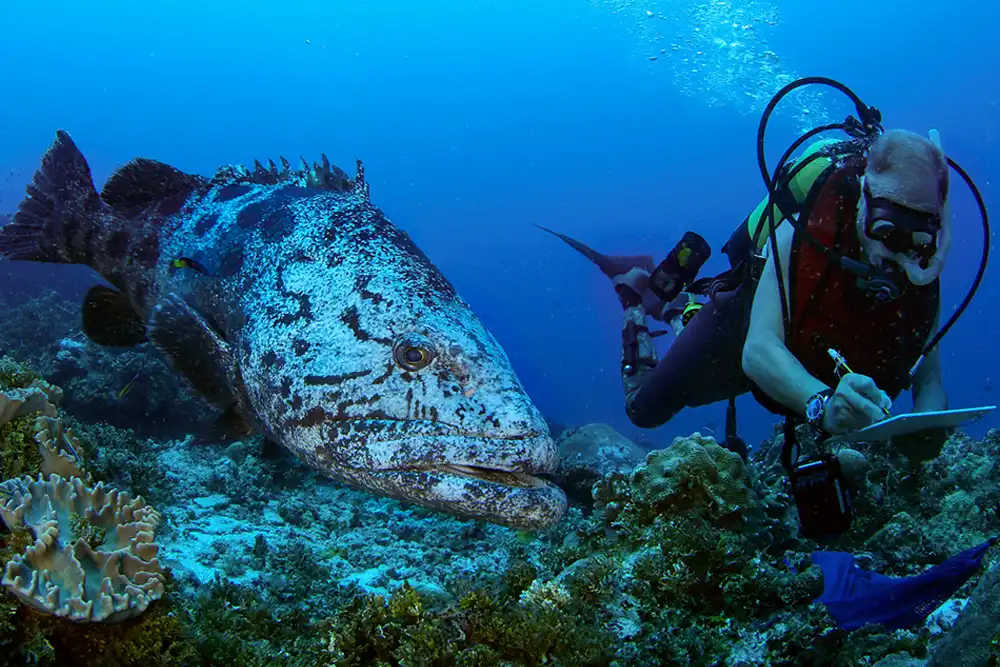
A new study has highlighted the positive effects of turning the world’s most popular scuba diving sites into Marine Protected Areas (MPAs), by helping to restore the marine environment while generating revenue for both local communities and dive tourism operators.
Published in Nature, Scientific Reports the study estimates that some 33 million dives are made in the ocean each year. While 67 per cent of these take place in areas where protections have already been implemented, only 15 per cent of those dive sites are ‘fully protected’, in which fishing and other destructive activities are completely prohibited.
The paper suggests adding a levy to dive prices of up to US$53 per dive could generate as much as $2 billion per year globally. The extra fees would not only help revitalise marine environments but also provide funding to local communities to aid with their upkeep and replace revenue lost by fishers and other businesses which rely on coastal areas for their income.
‘If you protect a marine area, more recreational divers will show up — and they’ll pay more for the privilege of seeing sensational underwater life,’ said the study’s lead author, Reniel Cabral, a senior lecturer at James Cook University in Queensland, Australia. ‘Communities and businesses are leaving money on the table by overlooking the benefits of marine sanctuaries.’
The sites frequented by divers constitute less than 1 per cent of the ocean, but the coral reefs and other habitats which dive tourism enjoys are home to some 25 per cent of all known life in the ocean.
Research suggests that fully protected MPAs can restore fish populations by up to 500 per cent, with an associated increase in the size of the fish.
The authors suggest this would make fully protected dive sites far more attractive to divers and, therefore, generate greater profits for the dive tourism sector while simultaneously protecting the local environment and providing for local communities that rely on the ocean for their survival – something of a win-win situation.
Related articles

‘Bottom line: Ocean protection benefits marine life, coastal communities and businesses,’ said Enric Sala, founder of National Geographic Pristine Seas and one of the study’s contributing authors.
‘Protecting diving sites from fishing and other damaging activities can generate new streams of income and benefit more people. It’s increasingly clear that efforts to protect 30 per cent of the ocean by 2030 are even more beneficial than we thought.
According to the research, the greatest number of dives are made in Egypt, Thailand and the United States – almost 3 million in each location every year. Indonesia, Egypt and Australia host the most dives in fully or highly protected MPAs, whereas the Philippines, US and Indonesia host the largest number of dives in unprotected waters, and would therefore benefit most from designating popular dive spots as fully protected marine sanctuaries.
The study’s authors found that most divers would be more likely to dive, and willing to pay more for the experience, in locations where high levels of marine protections are enforced, suggesting it would drive a global increase of up to 10.5 million dives each year which would generate up to $616 million in additional revenue for the dive industry.
‘The moment a diver comes face-to-face with the ocean’s vast beauty, they understand the importance and urgency of protecting it,’ said Drew Richardson, president & CEO of PADI – whose dive centres and resorts provided data sets for the study.
‘By safeguarding dive sites with more marine protected areas, we can reinvigorate the diver experience and regenerate hope for the ocean. The more people that are inspired to explore the ocean, the more torchbearers we will have to further advocate for safeguarding its future.’
The paper ‘Marine protected areas for dive tourism’ by Renial B Cabral et al is published in Nature Scientific Reports


